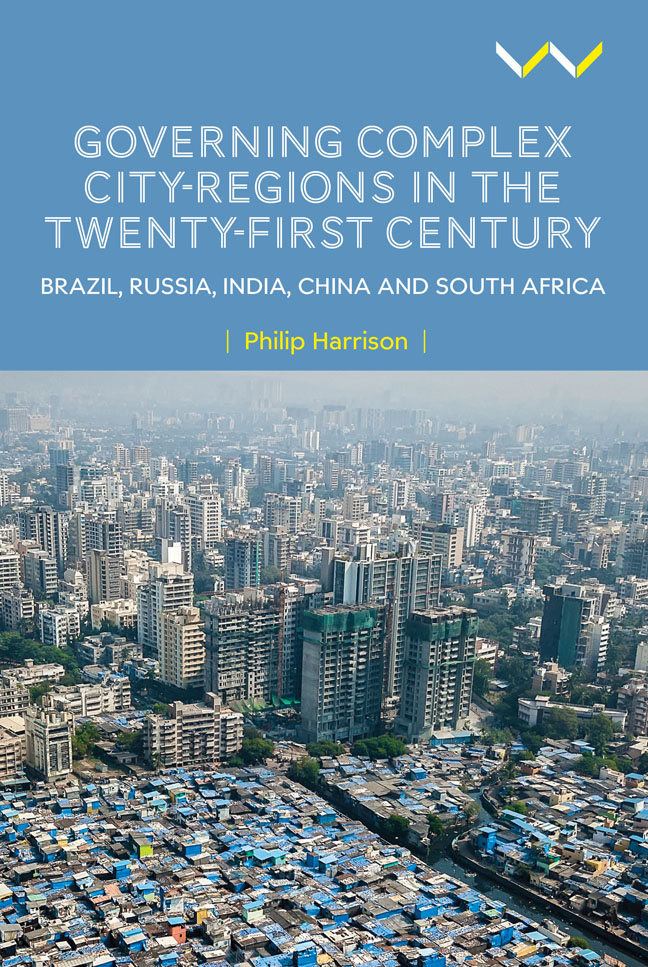 Governing Complex City-Regions in the Twenty-First Century
Governing Complex City-Regions in the Twenty-First Century Published online by Cambridge University Press: 02 March 2024
The context from which I write and research is the Gauteng City-Region (or GCR) in South Africa. It comprises the cities of Johannesburg, Tshwane (Pretoria) and several other smaller urban areas. Gauteng is the economic and political heartland of South Africa. It is a place of huge complexity embedded in a history of mining, colonialism, apartheid, political struggle and imperfect attempts to construct a democratic order. Social divides and inequalities run deep, and fostering collective action by bringing together different interests and actors to address common concerns and threats presents daunting dilemmas.
I have spent nearly two and a half decades in the GCR, working as a government official, a planning commissioner and an academic, engaging with and observing a complexly evolving city-region. As an official, I worked between 2006 and 2010 for the City of Johannesburg Metropolitan Municipality, which, unusually in international terms, is a single-tier metropolitan authority governing a population that is now around six million. However, the urban territory flows across the boundaries of Johannesburg and through the region of 15 million or more people. The GCR is itself embedded in a wider urban system and interconnects with rural areas formed from South Africa’s mining and apartheid past.
The GCR is a difficult place to govern, and increasingly so with political factions and declining levels of trust among social actors. Periodically, over its roughly 130-year urban history, there have been attempts to create collaborative structures across municipal authorities, although within the countervailing circumstance of colonial and apartheid divides. The end of apartheid and the creation of metropolitan authorities and a provincial government, with a jurisdiction more or less coinciding with the apparent edges of urban agglomeration, offered a fresh opportunity for collaborative governance to address collective action dilemmas.
Some progress in overcoming spatial inequality was made with these new structures, especially in distributing basic urban infrastructure and services. However, the fundamental dilemmas remain or have been amplified – unemployment is at record levels, education is vastly unequal, many poor people remain spatially marginalised from places of work, mobility across the GCR is a daily challenge, energy supply is shamefully inadequate, public health facilities are deteriorating, infrastructures are poorly maintained and environmental quality is poor, especially along the old mining belt.
To save this book to your Kindle, first ensure [email protected] is added to your Approved Personal Document E-mail List under your Personal Document Settings on the Manage Your Content and Devices page of your Amazon account. Then enter the ‘name’ part of your Kindle email address below. Find out more about saving to your Kindle.
Note you can select to save to either the @free.kindle.com or @kindle.com variations. ‘@free.kindle.com’ emails are free but can only be saved to your device when it is connected to wi-fi. ‘@kindle.com’ emails can be delivered even when you are not connected to wi-fi, but note that service fees apply.
Find out more about the Kindle Personal Document Service.
To save content items to your account, please confirm that you agree to abide by our usage policies. If this is the first time you use this feature, you will be asked to authorise Cambridge Core to connect with your account. Find out more about saving content to Dropbox.
To save content items to your account, please confirm that you agree to abide by our usage policies. If this is the first time you use this feature, you will be asked to authorise Cambridge Core to connect with your account. Find out more about saving content to Google Drive.